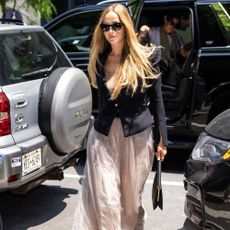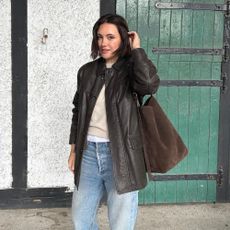I'm a Skin Expert: 9 Dermaplaning Tools That Actually Make a Difference
Facial hair is something all of us have, so our perspective on facial-hair removal is totally in line with our approach to body-hair removal. Whether you remove it or keep it, it's your body and your choice. That said, if you're not a fan of peach fuzz, you've come to the right place. There are a variety of methods you can employ for facial-hair removal, including waxing, threading and tweezing, but if you're looking for a technique that will also benefit your skin, dermaplaning is a unique method that also includes exfoliating away the top layer of your skin. The results? Skin feels smoother and softer, it looks brighter and glowier, and makeup applies like a dream.
Like we said, dermaplaning is just one method of facial-hair removal, but it's become more popular in recent years (no doubt due to the 3.4 billion dermaplaning tutorials available on TikTok). It's available as an in-salon treatment, but there is also a tonne of dermaplaning tools that you can use to DIY a dermaplaning facial at home. And yes, it's totally painless and actually surprisingly easy to do.

Below, we're covering the basics of what dermaplaning is and how to do it with the help of skincare expert and esthetician Katie Onyejekwe. We've also rounded up the very best dermaplaning tools at every price point. Thank us later.
What is dermaplaning?
"Dermaplaning is a cosmetic treatment where a surgical scalpel is used to remove peach fuzz, officially called vellus hair," explains Onyejekwe. "It also removes old, dead skin cells from the surface of the skin." Vellus hair is the thin, soft hair that grows over most of your body—it's very different to the hair on your head or to male facial hair, which are both known as terminal hair and are much thicker and coarser.
"Dermaplaning is not a permanent method of hair removal," adds Onyejekwe. "It simply cuts your hair down to the skin's surface level, meaning your hair will grow back faster than if you were to pluck it. Plucking removes hair from the root, which is below the skin's surface." Of course, plucking your peach fuzz would be an impossible task, which is why dermaplaning is a much more popular option.
What are the benefits of dermaplaning?
Because dermaplaning involves removing both peach fuzz and dead skin cells, it has an impact on both the appearance and feel of skin. "Dermaplaning can instantly leave the skin with a smoother, fresher and brighter appearance," says Onyejekwe. "It can also help makeup to blend into the skin more seamlessly due to the superficial exfoliating action combined with the reduction of facial hair."
I often dermaplane my face a day or two before a big event, a photo shoot or an occasion where I want my makeup to look its very best. I find that some foundations don't apply or sit so well on areas where I have a lot of peach fuzz, so dermaplaning can make a real difference.
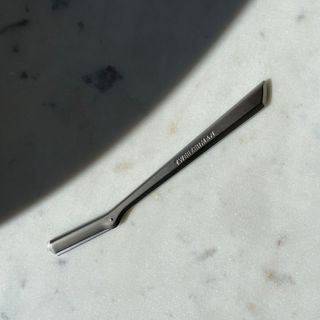
Is dermaplaning safe?
"While dermaplaning is relatively safe, I would always recommend seeing a qualified esthetician rather than trying to do it yourself at home," advises Onyejekwe. "Because dermaplaning is a form of exfoliation, it can lead to irritation/sensitivity in those with reactive skin, so seeing an expert will enable a professional to assess your skin beforehand to ensure the treatment is suitable for you and your concerns."
If you do decide to try out dermaplaning at home, hygiene is of the utmost importance. "Using a dirty scalpel that hasn't been sanitised can expose the skin to bacteria and lead to breakouts," Onyejekwe explains. It also goes without saying that there is always some risk of cutting skin when you're using a sharp blade. "If the scalpel is fresh, sharp and used at the wrong angle, it will cut the skin and, in some cases, could lead to scarring," she adds. "You also should not dermaplane skin with active acne because this can spread bacteria and worsen the issue."
How do you dermaplane correctly?
In addition to following the safety procedures outlined above, it's essential to use the right tools and techniques to ensure that your DIY dermaplaning facial achieves the best results. Onyejekwe suggests starting with clean, freshly washed skin. "Use a lightweight facial oil as a lubricant to help the scalpel glide over the skin," she adds. "And use downward strokes, following the contours of the face to avoid any nicks or cuts."
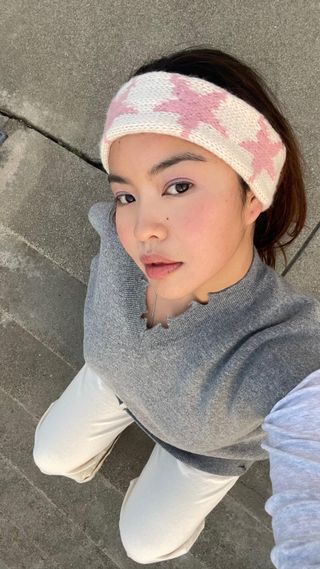
Does hair grow back thicker after dermaplaning?
It's a common misconception that facial hair grows back thicker after shaving, but this is categorically not the case. Vellus hair cannot change in texture, and it cannot transform into terminal hair.
"Dermaplaning simply cuts the hair at a blunter angle than it would naturally grow through, so it may feel thicker than usual when it first starts to grow back, similarly to when you shave your legs," explains Onyejekwe. "It is also likely that you are noticing the difference between going from having a face full of peach fuzz to none to it all growing back through again." So the perception of hair feeling thicker as it grows back after dermaplaning is simply because you are more aware of it.
The best dermaplaning tools:

We've trusted Tweezerman's tweezers for years, so you know you're in good hands with this weighty stainless steel dermaplaning tool. This isn't a disposable device, and the blades should be wiped clean between uses. It comes with three additional blades, which the brand recommends replacing every two to three months.
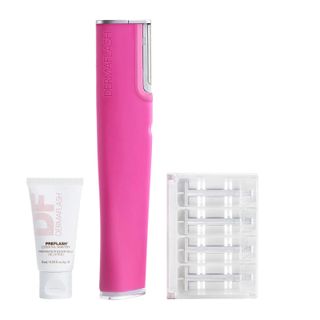
Inspired by the devices used in professional dermaplaning facials, this USB-charged device works at two different speeds to ensure that both peach fuzz and dead skin cells are efficiently removed.
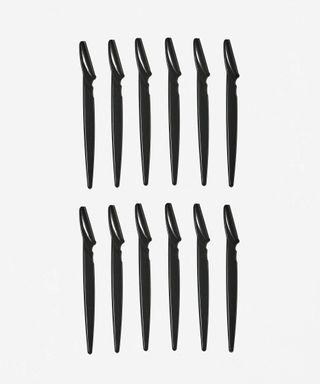
Using a fresh blade each time you dermaplane is one of the most hygienic ways to approach this hair-removal technique. This set has enough for a year's worth of DIY dermaplaning facials.

Thanks to its gentle sonic vibrations, you simply need to glide this device over your face to remove hair. If you're concerned about accidentally cutting skin, this can be a safer option.
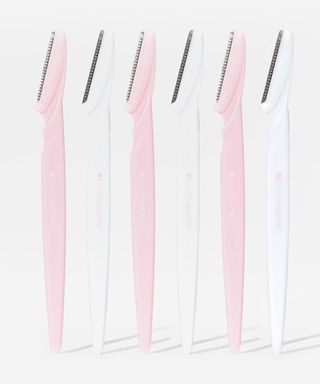
These short, angled blades are perfect for targeting awkwardly shaped areas of the face and ensuring precise hair removal around the brows and mouth.
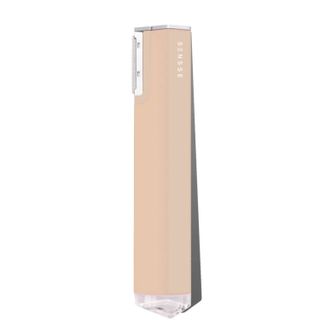
If you're also interested in experimenting with at-home microdermabrasion (a powerful exfoliating technique which helps to smooth and soften skin), this electronic dermaplaning tool comes with interchangeable heads.
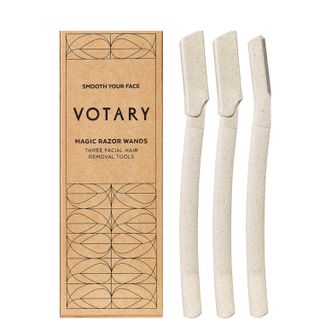
Votary's dermaplane tools utilise high-grade Swedish stainless steel blades, and the reduced-plastic handles are made with 80% wheat straw.
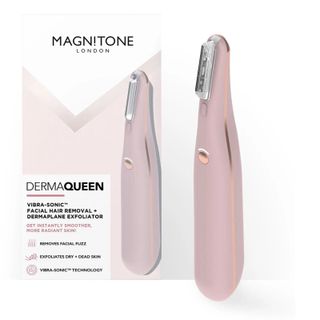
Magnitone is one of our favourite brands for electronic facial devices. Perfect for beginners, this dermaplaning tool has a contoured design and a safety guard to help prevent nicks and cuts.
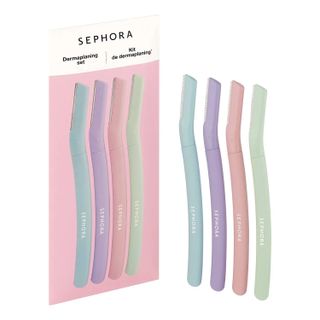
Made with recycled plastic, Sephora's single-use dermaplane tools are easy to transport and affordable, but they're still effective when it comes to removing dead skin and peach fuzz from your face.
Next Up: Danish People Have Notoriously Impeccable Skin—4 Things They Do That We Don't
Grace Day is a beauty editor and content creator. She has over 10 years of beauty-industry experience, spanning editorial, retail, and e-commerce, which gives her a unique understanding into how people shop for their beauty routines. While studying for a history degree (specialising in the history of beauty) and working as a beauty adviser in department stores, Grace started writing her own beauty blog in order to share the products she discovered while dealing with acne. After graduating, she moved to Beauty Bay as beauty editor and content manager. Grace is currently a beauty contributor to Who What Wear. She has also written for Hypebae and PopSugar and works as a brand consultant and copywriter.
